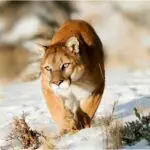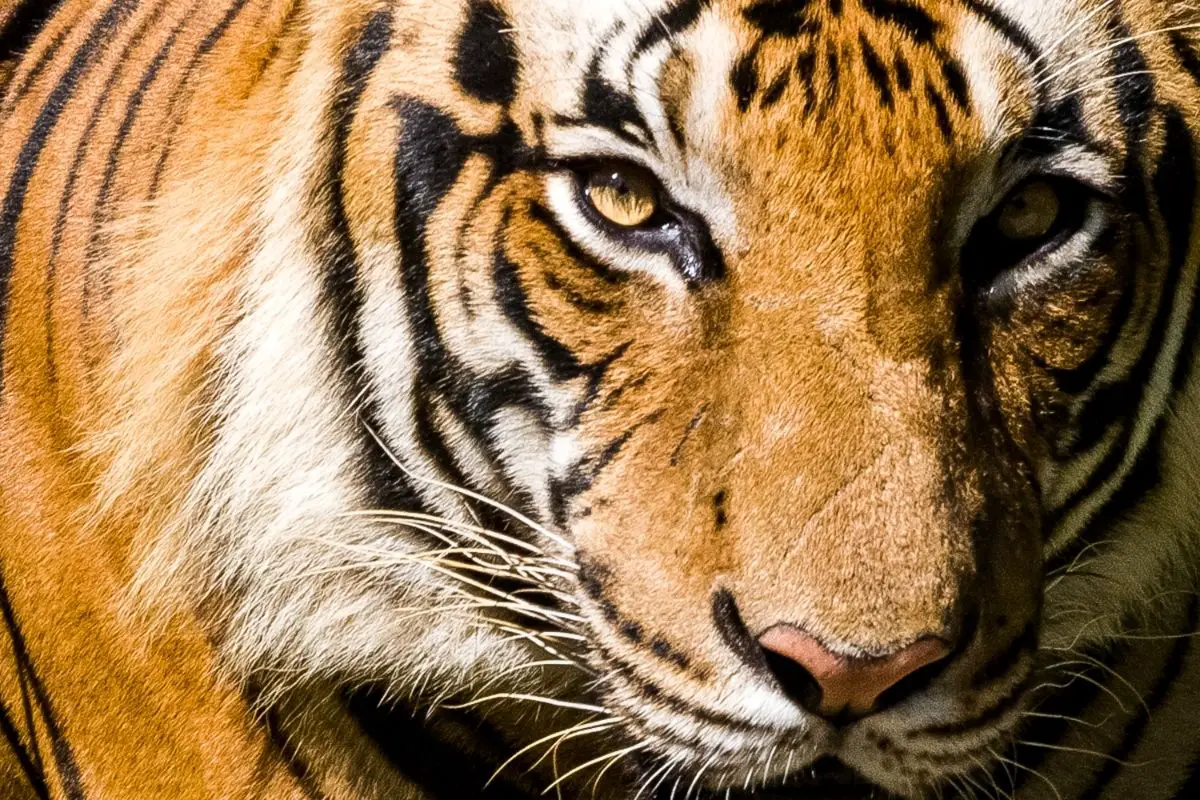Mountain Lion footprints, a clear sign of the elusive mountain lion, also known as the cougar, is a creature of majestic beauty and power.
One of the most fascinating aspects of these creatures is their footprints, which can provide us with a wealth of information about their habits, size, and movements.
In this comprehensive guide, we will delve into the world of mountain lion tracks, exploring everything from their size and shape to their appearance in different terrains such as snow and mud.
So, whether you’re an avid wildlife tracker or simply curious about these magnificent creatures, read on to learn more about the intriguing world of mountain lion footprints.
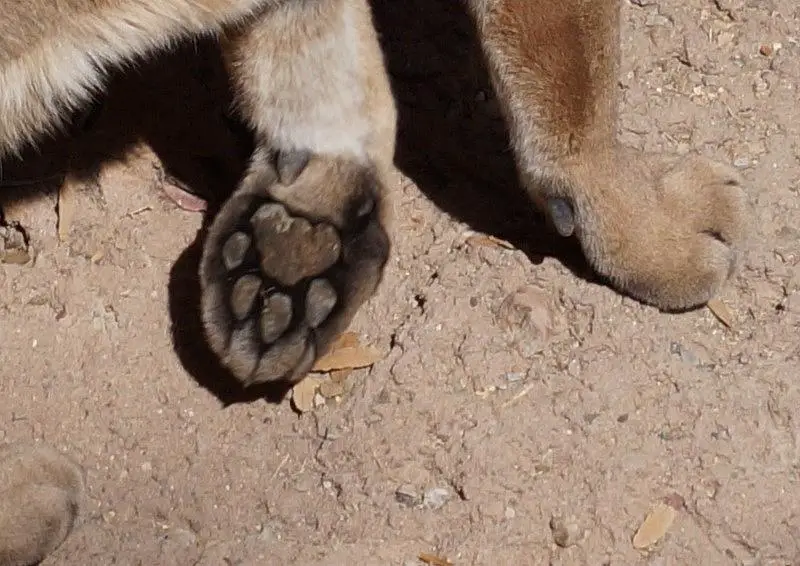
Understanding Mountain Lion Tracks
Mountain lion tracks, also known as cougar tracks, are a unique identifier of this large feline species. According to Bear Tracker, the size of a typical mountain lion paw print is approximately 3.5 to 4.5 inches in length and width.
The tracks usually show four toes, with a three-lobed heel pad that is characteristic of the species. The absence of claw marks is another key feature, as mountain lions, unlike dogs or bears, have retractable claws.
The shape of the mountain lion’s tracks is asymmetrical, unlike dog tracks, which are very balanced and symmetrical. The alignment of the front two toes in a mountain lion’s track is also asymmetrical, which is characteristic of feline tracks.
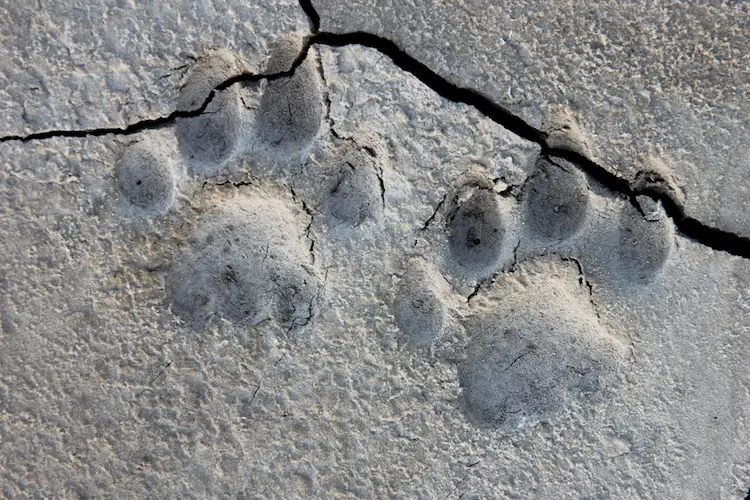
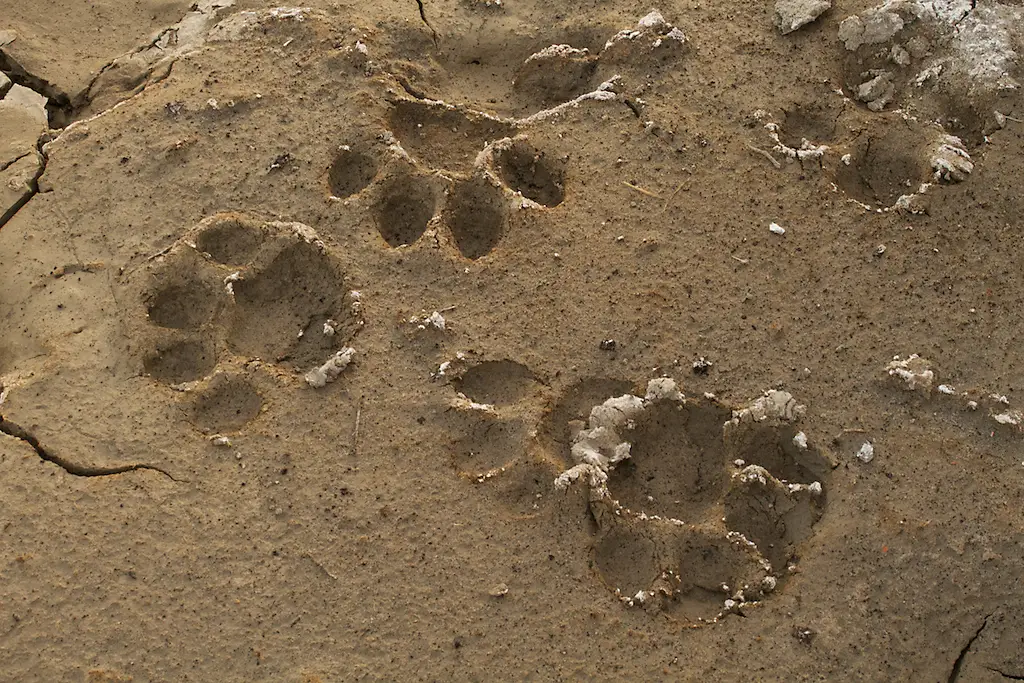
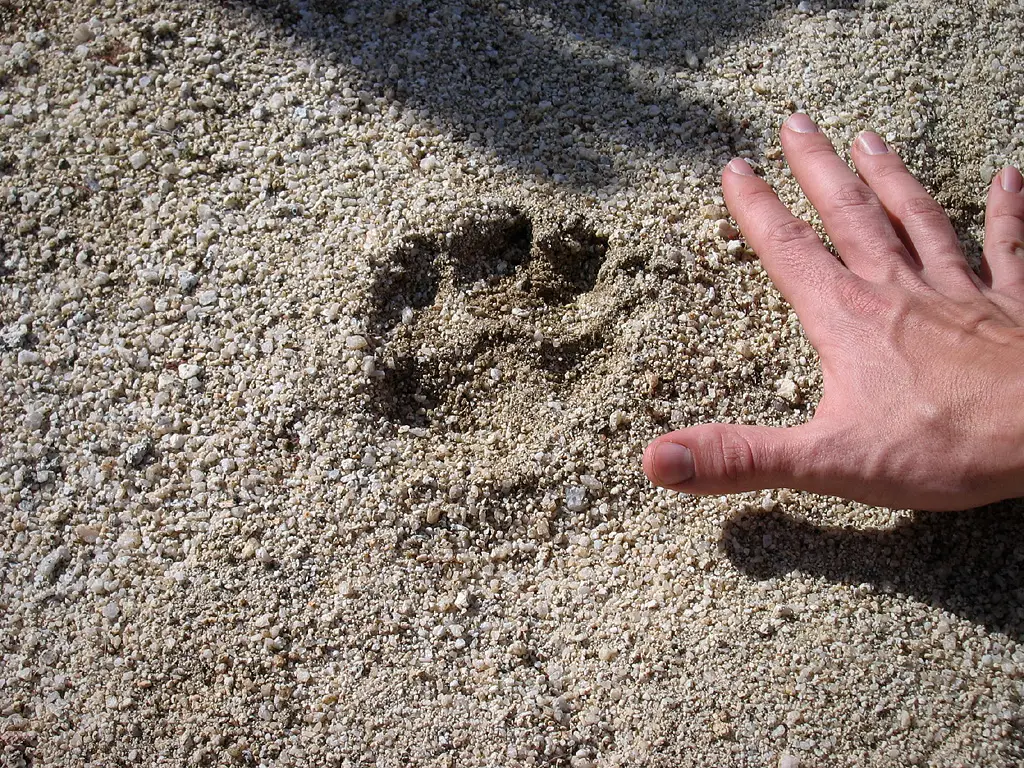
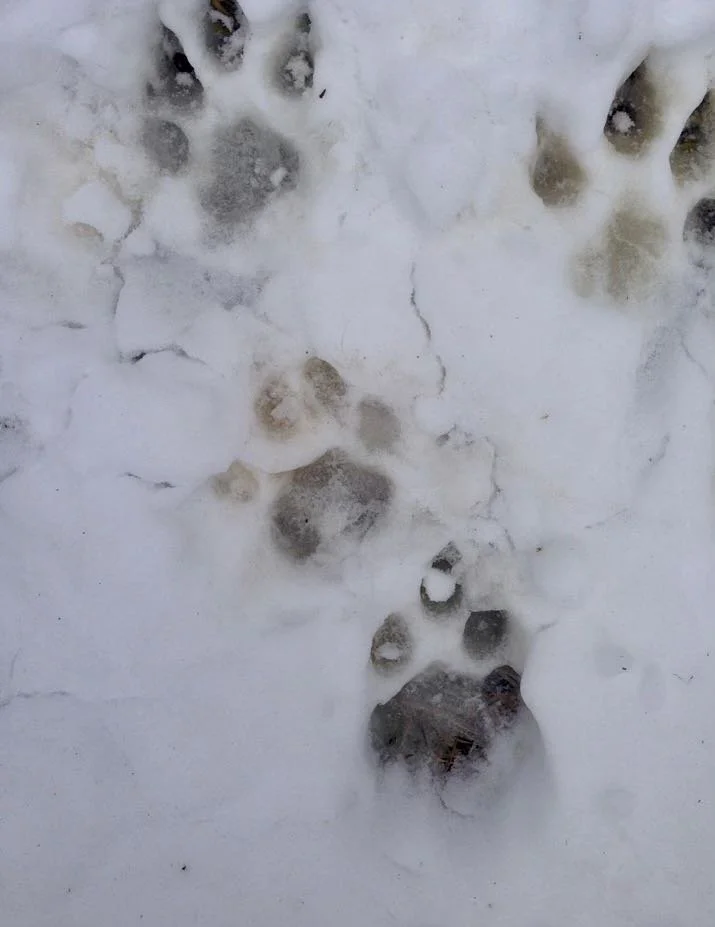
Mountain Lion Tracks in Snow
The snow provides an excellent canvas for mountain lion tracks, making them easier to spot and study. Mountain lion tracks in snow, or mountain lion snow tracks, are often more visible due to the contrast between the dark soil and the white snow.
The tracks can appear as a series of round impressions, with the distinctive four-toe and three-lobed heel pad pattern. The mountain lion paw prints in snow can also provide clues about the animal’s size, direction of movement, and even its behavior at the time the tracks were made.
Mountain lions are good climbers and can leap more than 20 feet up into a tree from a standstill. They can jump to the ground from as high as 60 feet up a tree.
A single male lion may travel 25 miles a night when hunting. Lions may be active by day in areas far from humans. They are most active at dawn and dusk, the times when deer are out feeding.
In conclusion, understanding mountain lion tracks can provide a wealth of information about these elusive creatures. Whether in the snow or mud, these tracks can tell us about the mountain lion’s size, movement, and behavior, offering a fascinating insight into their lives.
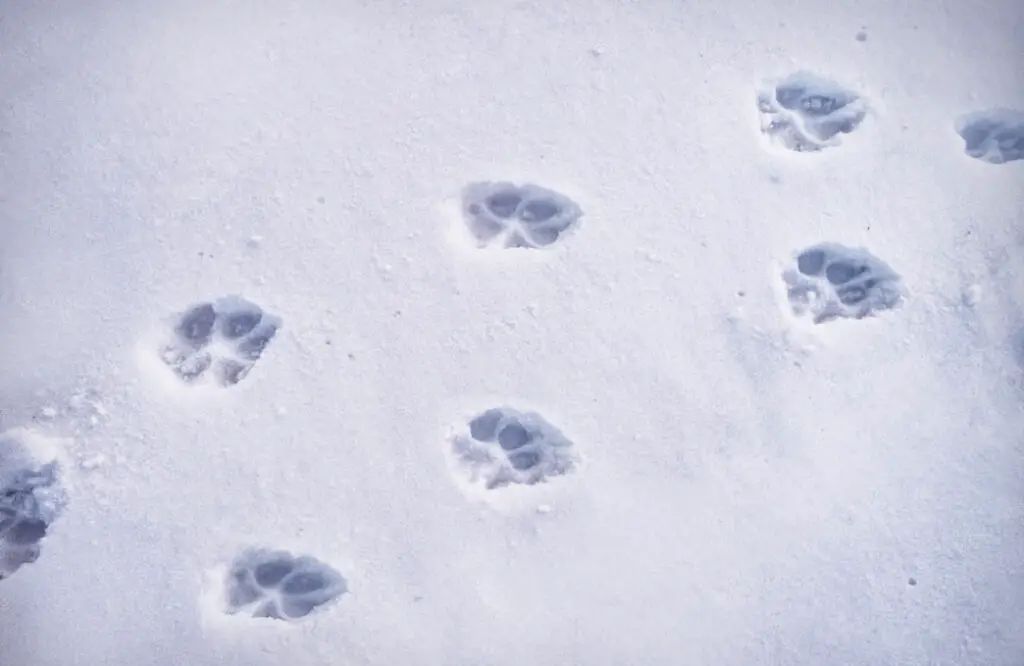
Mountain Lion vs. Bear Tracks in Snow
Distinguishing between mountain lion and bear tracks in snow can be a challenge, especially for the untrained eye. Bear tracks are generally larger, with five toes and a wide, rounded heel pad.
The claws of a bear are also usually visible in the tracks, unlike the mountain lion’s retractable claws. By contrast, mountain lion tracks are smaller and show the characteristic four-toed and three-lobed heel pad pattern.
Bear tracks in the snow are generally larger than those of a mountain lion, with the average size of a grizzly bear’s paw being 15 cm (6 inches) in width compared to the 8-10 cm (3.5-4 inches) width of a mountain lion’s paw.
The presence of claw marks is another distinguishing feature, as bears cannot retract their claws like mountain lions can.
The overall shape of the bear’s track is also different, with a more rounded appearance compared to the more oval shape of the mountain lion’s track.
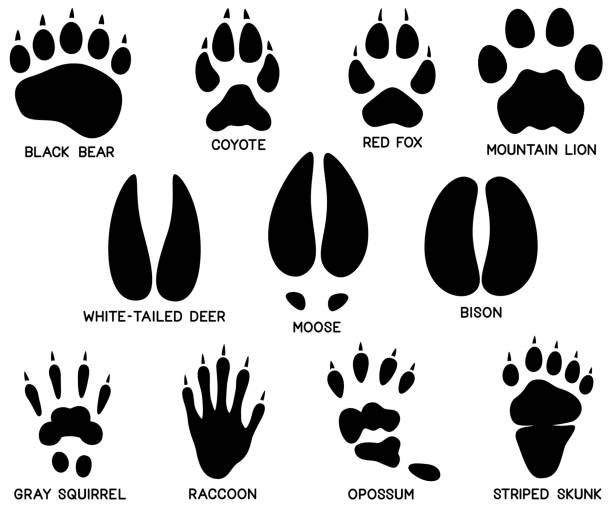
Cougar Tracks in Different Terrains
Mountain lions, or cougars, are adaptable creatures that can thrive in a variety of terrains. Cougar tracks in the snow are often the most visible, but these animals also leave distinctive footprints in mud and sand.
Cougar tracks in mud can provide a wealth of detail, with the soft material capturing the unique shape and pattern of the paw. Similarly, cougar prints in sand can reveal subtle details about the animal’s movement and behavior.
In the mud, cougar tracks can be quite detailed, showing the distinct lobes of the heel pad and the teardrop shape of the toes. The soft mud can also capture the subtle indentations of the fur on the paw, providing even more detail.
In the sand, cougar tracks can be harder to spot due to the loose nature of the material. However, the tracks can still provide valuable information, such as the direction of movement and the size of the animal.
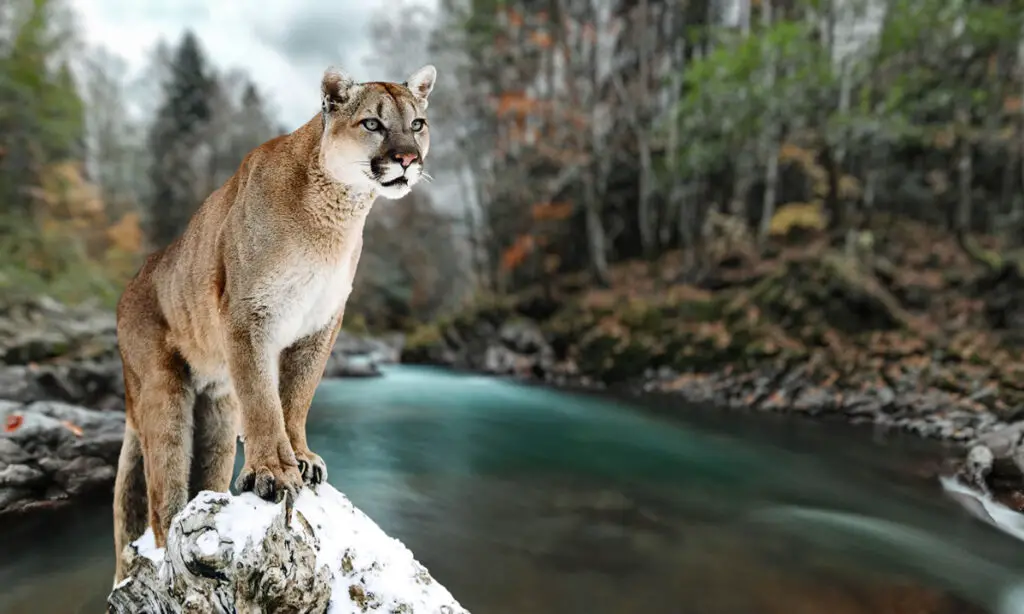
What to Do If You Come Across Fresh Mountain Lion Tracks
Stumbling upon fresh mountain lion tracks can be an exhilarating experience, but it’s important to remember that you’re in the territory of a wild and potentially dangerous animal. Here’s what you should do if you find yourself in this situation:
- Stay Calm: The first thing to do is to stay calm. Remember, mountain lions are generally elusive creatures that prefer to avoid humans.
- Assess the Situation: Look around for other signs of the mountain lion. This could include scat, scratches on trees, or even the animal itself. The freshness of the tracks can give you an idea of how recently the mountain lion was in the area.
- Make Yourself Appear Larger: If you spot the mountain lion, make yourself appear larger by raising your arms and standing on your tiptoes. This can make you seem less like prey to the mountain lion.
- Do Not Run: Running can trigger a mountain lion’s instinct to chase. Instead, back away slowly while maintaining eye contact.
- Protect Yourself: If the mountain lion appears aggressive, throw rocks or branches without crouching or turning your back. Fight back if attacked.
- Leave the Area: Once you’ve ensured your immediate safety, leave the area. Mountain lions are territorial creatures, and you don’t want to intrude any longer than necessary.
- Report the Encounter: Notify the local park or wildlife officials about your encounter. They may want to close off the area or take other measures to ensure the safety of visitors.
Remember, while mountain lion attacks on humans are extremely rare, they can happen, particularly if the animal is cornered or a female mountain lion is defending her kittens. Always respect wildlife and observe from a distance.
Conclusion
Understanding and identifying mountain lion footprints can be a fascinating endeavor, providing insights into the life and habits of these elusive creatures. Whether you’re tracking mountain lions in the snow, mud, or sand, remember to respect these magnificent animals and their habitats. Happy tracking!
Note: This blog post is intended to provide general information about mountain lion footprints. If you encounter a mountain lion in the wild, it is important to keep a safe distance and never attempt to approach or interact with the animal. Always follow local regulations and guidelines when exploring natural areas.
- Bengal Cat vs Wild Bengal Tiger: Complete Comparison 2025 - October 31, 2025
- Complete Wild Cat Spotting Guide for Hikers 2025 - October 31, 2025
- Lynx vs Bobcat: Complete Field Identification Guide 2025 - October 30, 2025


